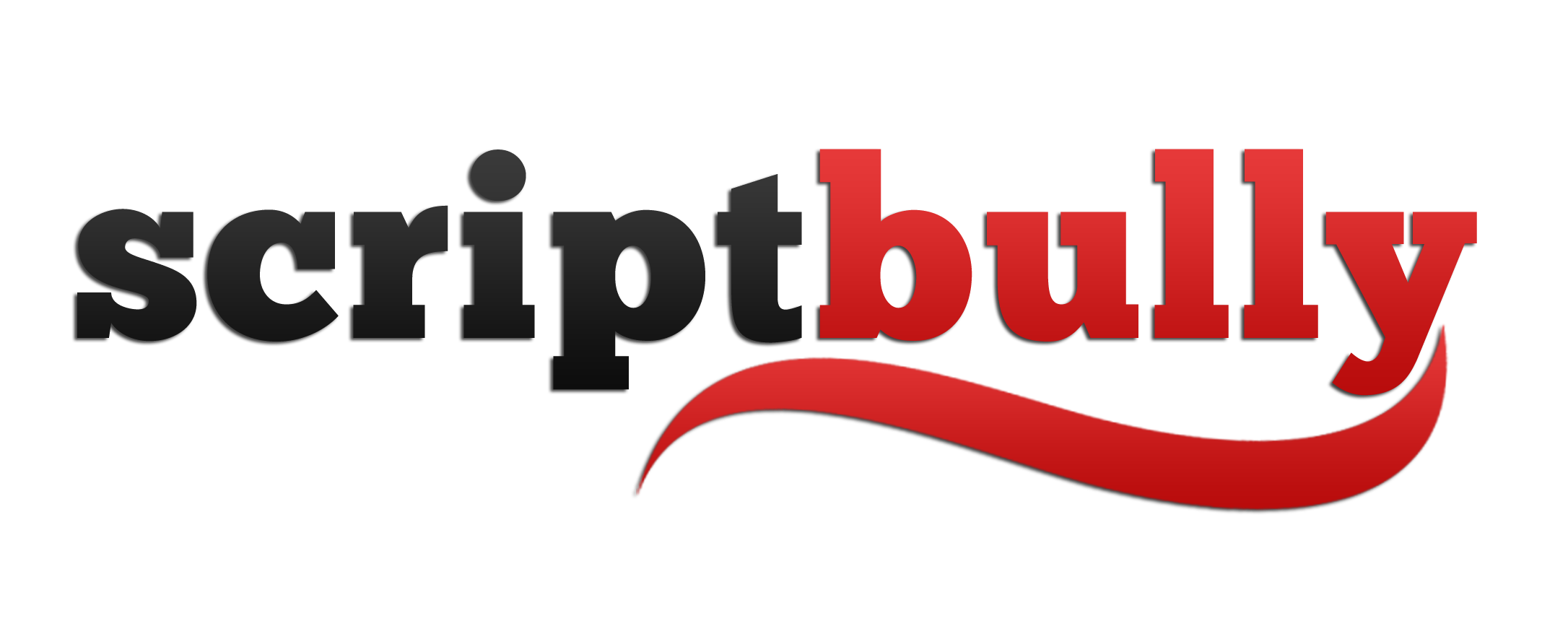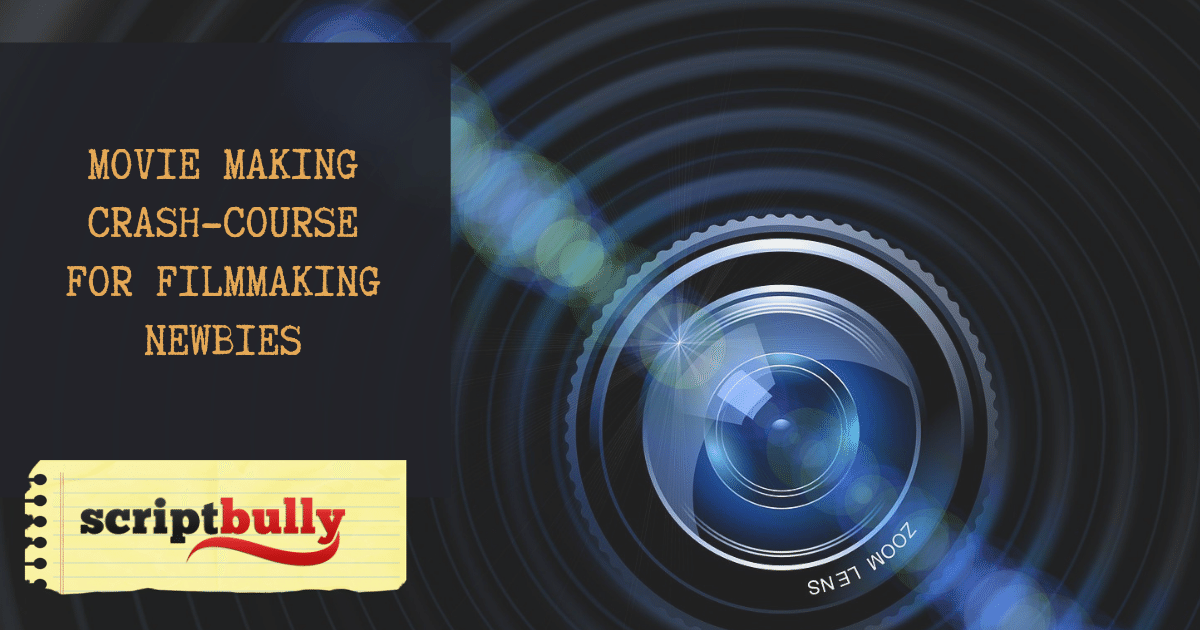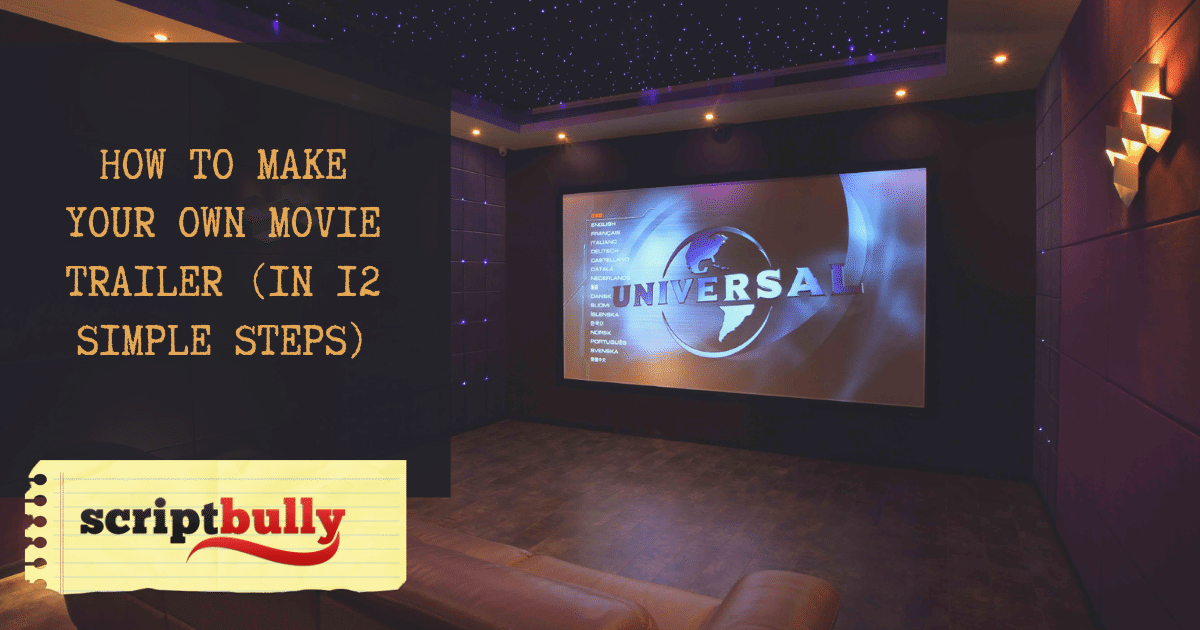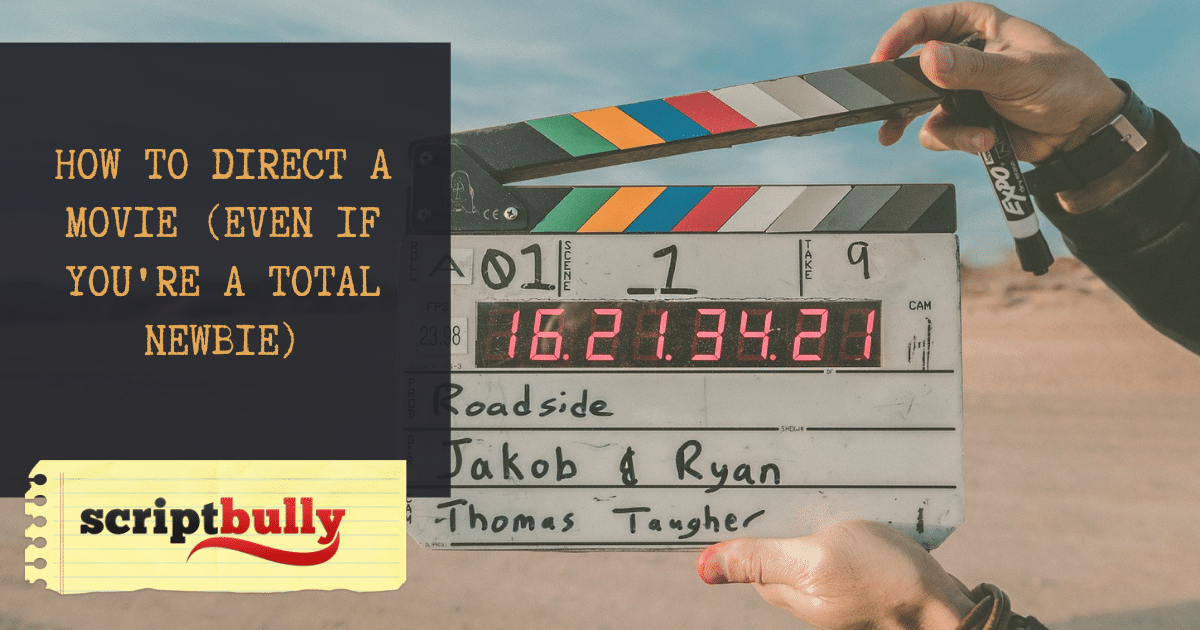Think because you’ve watched the “Director’s Commentary” on every Tarantino film that you’re an expert on movie making? Not sure how a script gets turned into an actual movie? (And in which order all that technical crap gets done.)
Well, here is a crash course for screenwriters wanting to learn how to direct a movie — or any film scribbler simply wanting to know how to make a film from their words.
Note: Obviously some elements of movie making will be expanded or eliminated based on the budget and scope of a specific project. But this is a good, general framework to help you get educated. (And to help you NOT sound like a newbie.)
Pillar #1: Development (Hell)
Everything starts with a script. (Or an idea for a script.) And that EVERYTHING includes endless meetings (and tons of notes) with key stakeholders. And these stakeholders include:
- The screenwriter (duh)
- A producer (or team of producers)
- A director
- A studio or some form of financing
- A BIG STAR (who might also be attached as a producer)
- Development hell can last anywhere from a few months to the end of time. (The more outside money you need, the more input/development there will be.)
There will usually be rewrites, and more notes, and more rewrites. (At this time casting choices are bandied about to help with financing.)
But the key thing to remember, if you’re a screenwriter, is that development folks:
- Usually have a pretty grasp of what works in a story (and in the marketplace)
- Want the project to succeed artistically and financially (Obviously an emphasis on latter)
- Development is a dance. And whatever your particular role in development, the more you can see it as a chaotic weird dance – the more fun you’ll have. (And possibly achieve your creative vision, while still making money for investors.)
Pillar #2: Pre-Production
So…when does pre-production start? Well, when somebody actually writes a check.
Until then, your project is just this nebulous thing that you can talk about your local Coffee Bean and Tea Leaf.
Once you’ve got a budget – and the funds to back it up – then it’s time for the project to assemble:
- A casting director (who has to look through thousands of head shots to find Cop #2)
- A location scout (to find that post-apocalyptic zombie cafe for your third act)
- A line producer (this is the real producer – the guy or girl who goes line-by-line through the script and makes a list of all the crap that has to be bought)
- Cinematographer (the person who does a visual script breakdown with the director – and of course claims they can’t do the project in anything less than 70mm)
- 1st AD (this is the person who makes the production schedule – and generally tells the director everything is wrong and nothing is working)
- Production Designer (Probably the coolest, hippest person on the project; helps come up with a look and feel of the project)
Once all the materials, assets and schedules for shooting are completed it’s time for…
Pillar #3: Production
Okay, so you’ve got your actors, your locations – your rented llamas – it’s now time to start shooting.
So here is how a typical shooting day works:
Principal Photography (this is the “set up the equipment while the 1st AD bosses everybody around) part of the day. (Actors are usually in makeup and the director is usually having coffee with some Russian supermodel.)
Blocking (this is when the director actually “directs” the actors in terms of movement and performance)
Shot Prep (this is when the cinematographer takes over, decinding on things like focal length and lighting to get the shot the director wants)
Shooting (all that prep leads to actual film/hard drive space being captured)
Monitor Review (if the project has a monitor this is when the director, cinematographer – and that BIG EGO ACTOR – will stare at the monitor and make sure that heartfelt scene with the puppy and the nun actually worked.)
Rinse and repeat for the next 2-3 weeks – or if you’re Rinchard Linklater 5-7 years – and you’ll be ready for…
Pillar #4: Post-Production
I know it sounds like a cliche, but this IS where the magic happens. Where all those random moments and set ups and medium shots and obnoxious close-ups are cobbled together into a finely-tuned machine.
This includes things like:
- Editing (a constant process that has many forms – and many expectant masters)
- Mixing (where sound effects are added and dialogue is re-recorded)
- Music Scoring (probably the most fun, creative part of a film – and the thing that really transforms material into an actual movie)
- Test Screenings (These can be as simple as a screening for your parents to as complex as a focus group in Santa Barbara)
And after six months, or if you’re Oliver Stone two years, it’s time to finally send your movie to…
Pillar #5: Distribution
If you’re an indie filmmaker this will usually be in the film festival circuit. (Or perhaps make the rounds at your school.)
But wherever you are on the movie making continuum, and whatever your role, make sure your project takes the time to get things right in the post-production phase. (No point in rushing a project that isn’t ready for prime time. Same goes for when you make your own movie trailer.)
And be careful of them sleazebag film distributors. They will make you all kinds of promises. (And guarantee results: for a small fee, of course.)
The best course is to tell a really good story. (And remove all that self-indulgent film-school crap. ) And if you do that, you won’t just build an organic following. (You’ll build a career as well.)
Recommended Resources:
- How to Make a Film (on a Shoestring Budget)
- How to Direct a Movie (Even If Yer a Newbie)
- Make Your Own Movie Trailer (in 12 Easy Steps)
What’s Your Take?
Have you picked up a thing or two dipping your toe in the movie making waters? Let us know in the comments below.






